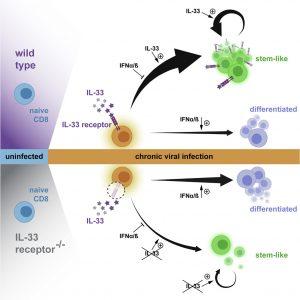Specific immune cells have been found to hold the secret to dealing with the prolonged battle against a chronic illness, according to researchers (Figure 1).
Before more harm is done, the body needs to get clear of infected and abnormal cells as soon as feasible. These so-called lethal T cells are in charge of doing this. In this research, the mechanism by which these cells combat persistent infection is being examined. Chronic illnesses are an exception because they trigger both an intense inflammatory reaction and the activation of T cells.
Researchers looked at how the immune system is still able to produce enough T cells for the ongoing battle against chronic infections in defiance of this. According to their findings, a biological messenger named interleukin-33 (IL-33) performs a crucial part. It gives the T cells more time than normal to combat infection. Additionally, the biological messenger stimulates the growth of additional T cells, increasing the number of cells accessible to fight the illness.
The results might assist with the management of persistent infections like hepatitis C.
Journal article: Anna-Friederike Marx, A.F., et al., 2023. The alarmin interleukin-33 promotes the expansion and preserves the stemness of Tcf-1+ CD8 T cells in chronic viral infection. Immunity.
Summary by Stefan Botha











